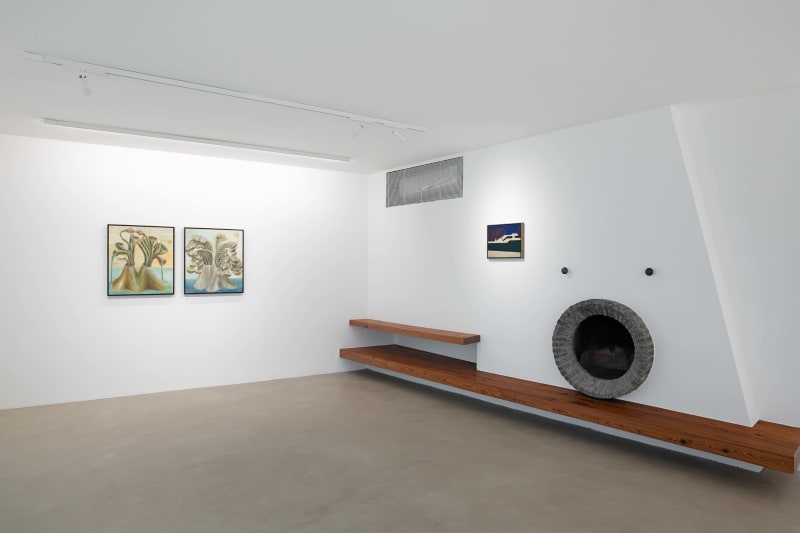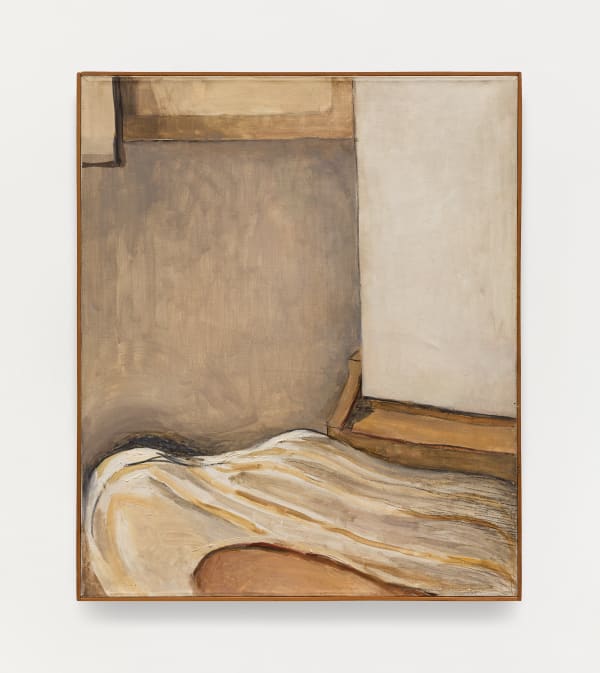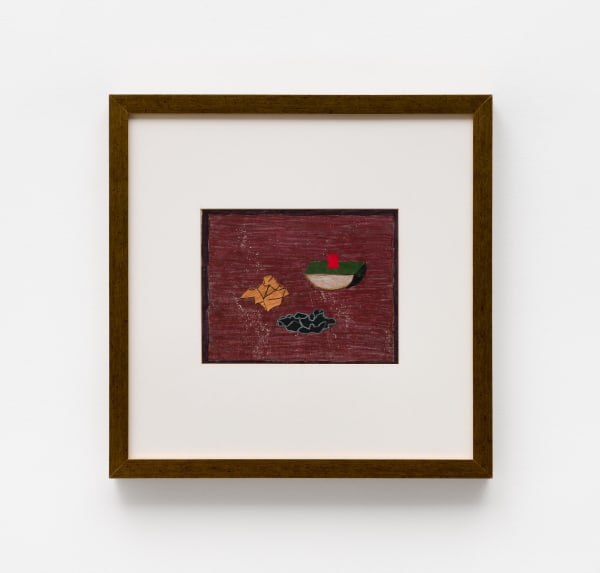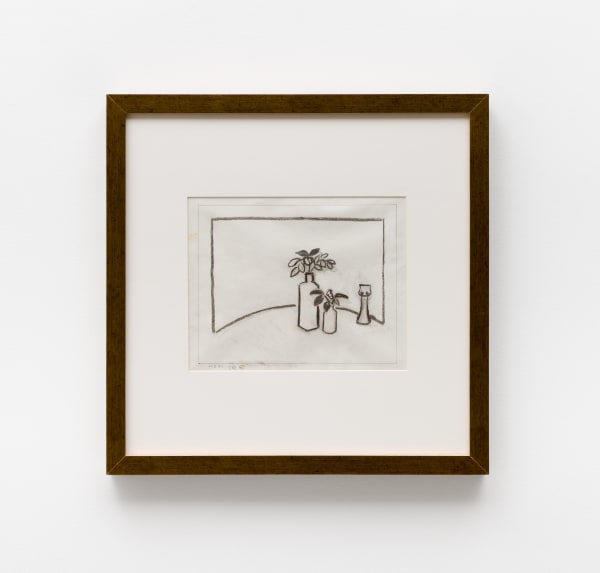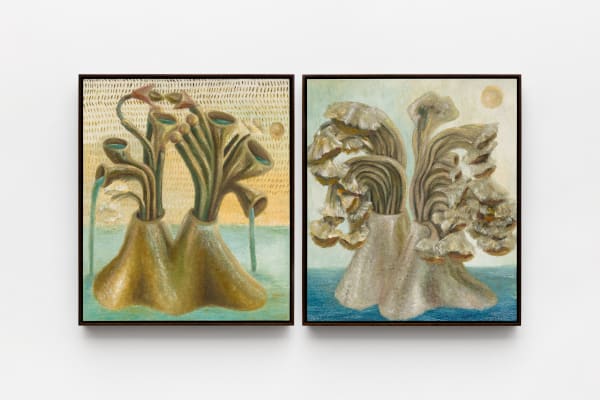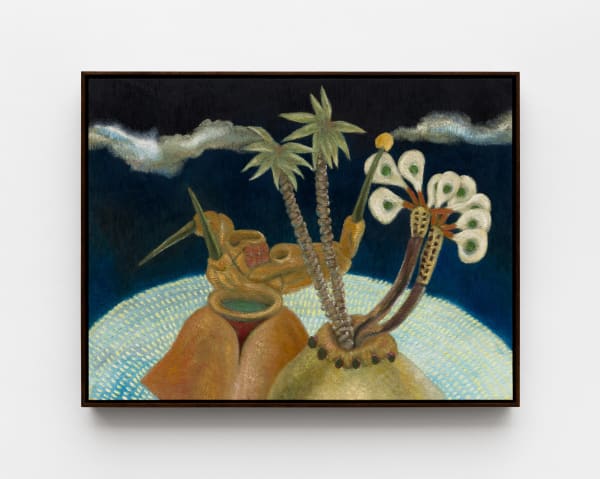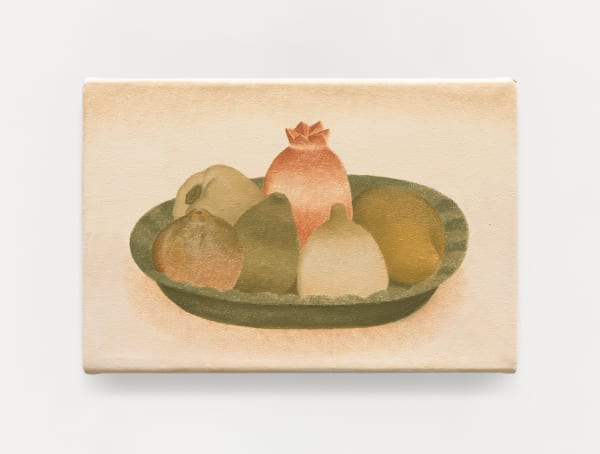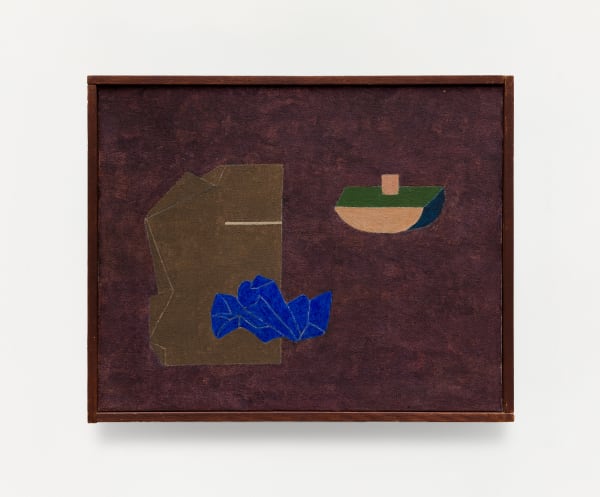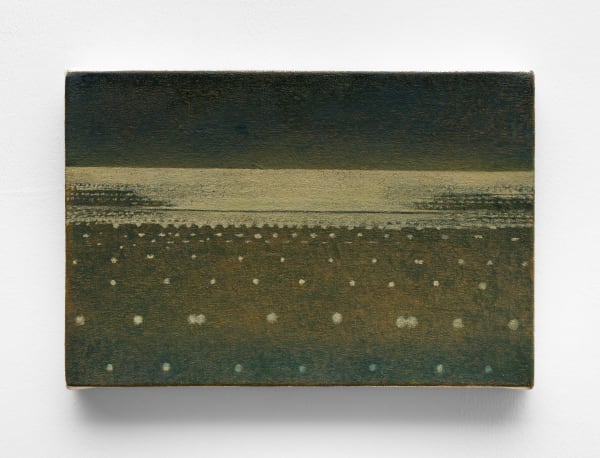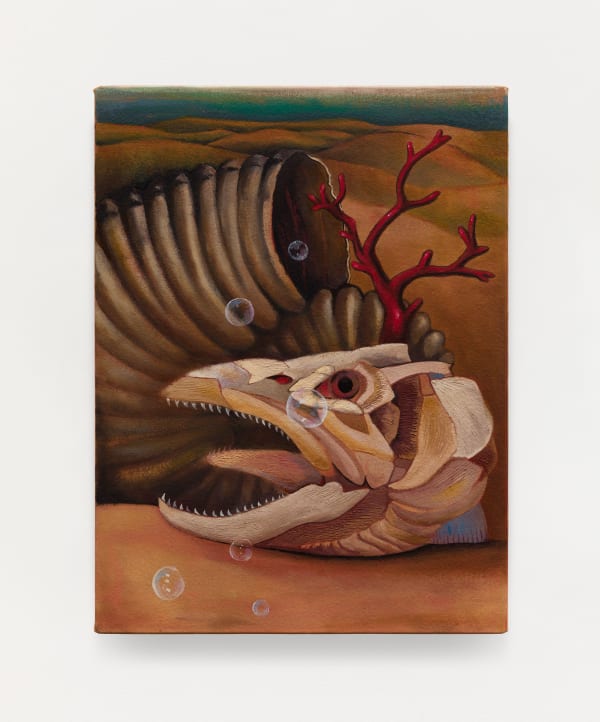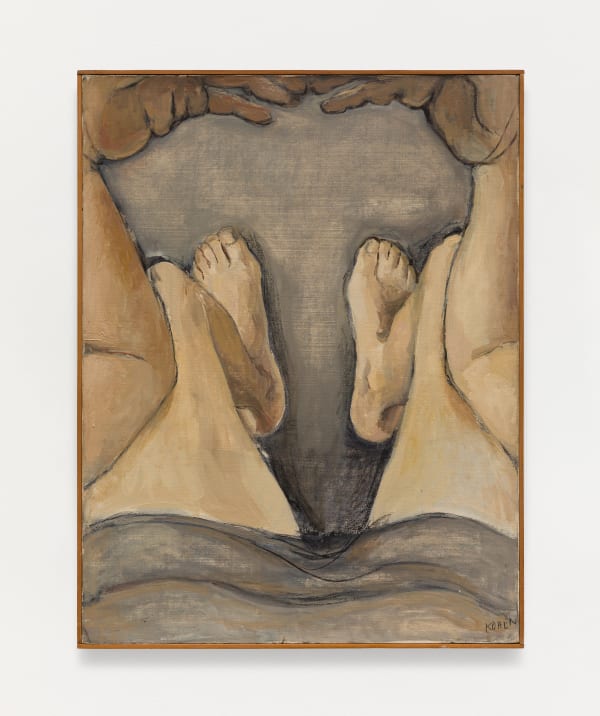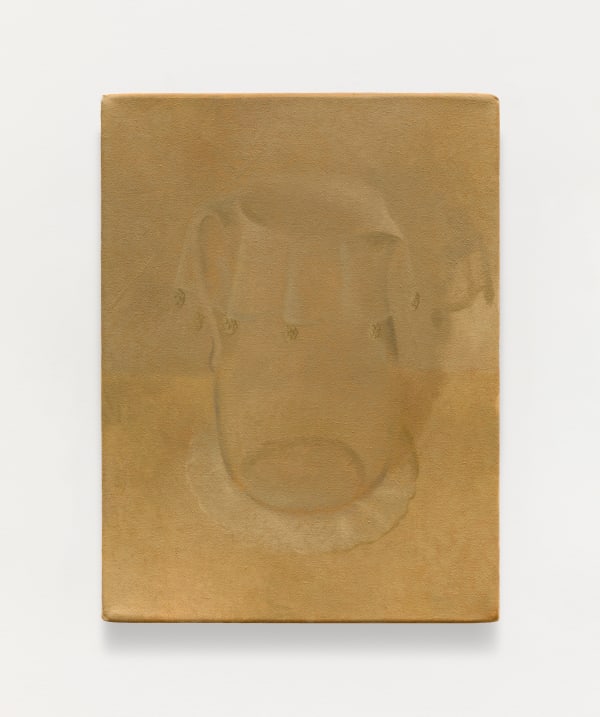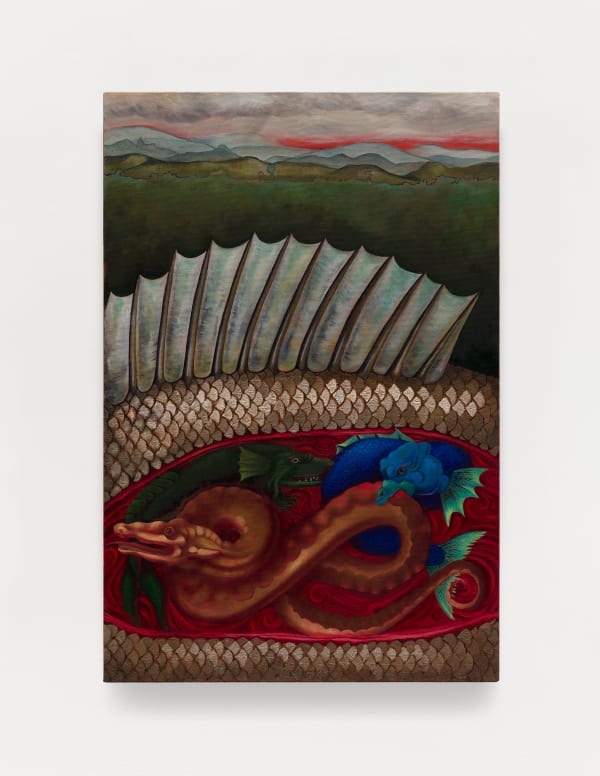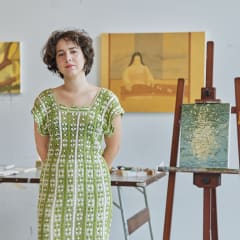Remanso Group Exhibition
Mendes Wood DM is pleased to present the group exhibition Remanso with works by Eleonore Koch, Linda Kohen, Anna Livia Monahan, Rayana Rayo and Paula Siebra. Their paintings expose what is intrinsic to them, leading the eye into silent, dense, and symbolic territories. Their works illuminate domestic spaces, bodies, objects, and representations of the psyche and the feminine, creating a constellation of symbols that translate a private yet communicable everyday life.
Remanso brings together an intergenerational constellation of artists from different geographical regions and unique backgrounds, who have found each other in the craft of small-scale painting. At first discreet, the canvases have a depth that takes the viewer inside themselves: they evoke memories, dreams, fears, and uncertainties. This sensitive dialogue becomes even more powerful when it inhabits Casa Iramaia, a former family home whose introspective atmosphere both welcomes and amplifies the visual narratives, as if it were an extension of the works themselves
Based on the idea of representing the mysteries of life and death, Linda Kohen (b. 1924) develops an extremely metaphysical, poetic, and sensitive painting. The Italian-Uruguayan artist works on series that depict everyday life and the intimacy of her personal life, exploring themes such as loneliness and absence, through a soft palette of whites and ochres, and the translucency created by diluted paints. In El pecho II (1981) and El pecho III (1982), Kohen gives us his point of view on his own body and its surroundings, in a plunge into his interiority. The presence of an empty canvas in the corner of El pecho III suggests painting as a solitary and immersive practice, like an extension of one’s own body.
Although separated by decades and geographies, there is a clear resonance between Kohen and Paula Siebra (1998). With a visual vocabulary developed from intimate memories of Ceará, where the artist was born and still lives, Siebra constructs her canvases through a patient gaze and familiarity. Shades of gray, beige, and ochre convey the stillness and solitude of the object in Jar (2025). The transparency that extends outside the limitations, added to the protective fabric above it, creates a common and familiar atmosphere. Through the construction of thin layers that soften contours and reduce contrasts. and moderate tones, the light floats between the object and space, as if the artist were mapping lived time – between habit and reminiscence.
Everyday life in the work of Rayana Rayo (1989) is presented in a different light: Landscapes and characters appear through a fabulous, almost magical lens, resulting in figurative abstractions. Her works represent deep dives into her interiority, echoing forms and beings that recall maritime beings from the Paleozoic era. The paintings O mar no meio, Enquanto as horas passam and Fabulações entre terra, água e ar (2025), make up a visual narrative that alternates between communion and separation, between beings that seek coexistence and autonomy. Her cohesive color palette and distinct textures corroborate the creation of a narrative about her inner self.
In Anna Livia Taborda Monahan’s work, the fantastic takes on equally vivid contours, creating surreal narratives. Snakes and eels intertwine, fish and crocodiles connect, and animal carcasses intertwine in dreamlike and vibrant scenarios, as in Cobra e Enguia I (2025). In the work, the two animals tangle in a delimited space forming a spiral of communion, suggesting a creative force and vital energy. Sometimes in outdoor spaces, sometimes enclosed, Monahan's warmly colored and contrasted animals refer to his research into animals of various species and allude to his inner world.
Eleonore Koch (1926-2018), on the other hand, offers a silent but no less intense gaze. Her landscapes, marked by contrasting colors and refined compositions, speak of absence, interiorization, and subjectivity. The artist, born in Germany and based in Brazil, was a silent observer of the world around her. In Vaux Le Vicomte (1981), she transforms a view of a French palace into an almost abstract image, made up of blocks of color that delimit the space and at the same time suggest an empty and familiar place. His painting is an invitation to internal and external contemplation.
Remanso proposes a sensitive encounter between artists who expand the concept of everyday life, intimacy, and subjectivity, without limiting them to one style or concept. The exhibition proposes an attentive look and a silent listening to the voices that meet, echo, and sensitize us at Casa Iramaia. In her works, the intimate is unveiled on canvas with courage, revealing what is private and priceless in a social context that has historically limited female expression, especially in painting.
-
 Anna Livia Taborda Monahan, Cobra e Enguia I, 2025
Anna Livia Taborda Monahan, Cobra e Enguia I, 2025 -
 Linda Kohen, El pecho III | The Chest III, 1982
Linda Kohen, El pecho III | The Chest III, 1982 -
 Anna Livia Taborda Monahan, Gengibre e Ave, 2025
Anna Livia Taborda Monahan, Gengibre e Ave, 2025 -
 Eleonore Koch, Untitled | Sem título, 1960 - 1970s
Eleonore Koch, Untitled | Sem título, 1960 - 1970s -
 Eleonore Koch, Untitled | Sem título, 1970's
Eleonore Koch, Untitled | Sem título, 1970's -
 Eleonore Koch, Untitled | Sem título, 1960 - 1970s
Eleonore Koch, Untitled | Sem título, 1960 - 1970s -
 Paula Siebra, Menino lendo, 2025
Paula Siebra, Menino lendo, 2025 -
 Rayana Rayo, Enquanto as horas passam, 2025
Rayana Rayo, Enquanto as horas passam, 2025 -
 Eleonore Koch, Vaux Le Viconte, 1981
Eleonore Koch, Vaux Le Viconte, 1981 -
 Rayana Rayo, Fabulações entre terra, água e ar, 2025
Rayana Rayo, Fabulações entre terra, água e ar, 2025 -
 Paula Siebra, Frutas de cêra, 2025
Paula Siebra, Frutas de cêra, 2025 -
 Eleonore Koch, Folha de papel, mata-borrão e papel amassado, 1997
Eleonore Koch, Folha de papel, mata-borrão e papel amassado, 1997 -
 Anna Livia Taborda Monahan, Aberto, 2025
Anna Livia Taborda Monahan, Aberto, 2025 -
 Paula Siebra, Luar, 2022
Paula Siebra, Luar, 2022 -
 Anna Livia Taborda Monahan, Bolhas, 2025
Anna Livia Taborda Monahan, Bolhas, 2025 -
 Rayana Rayo, O mar no meio, 2025
Rayana Rayo, O mar no meio, 2025 -
 Linda Kohen, Con la cabeza entre las manos | With my head in my hands, 1981
Linda Kohen, Con la cabeza entre las manos | With my head in my hands, 1981 -
 Paula Siebra, Jarra, 2025
Paula Siebra, Jarra, 2025 -
 Anna Livia Taborda Monahan, Entranha I, 2025
Anna Livia Taborda Monahan, Entranha I, 2025
